Dupa plasarea solicitării de comandă, in sectiunea Istoric puteti vedea cate solicitări de comandă mai avem de procesat inaintea dumneavoastra
Program de lucru: Luni - Vineri 9:00 - 18:00, pauza 13:00 - 14:00.
Se efectueaza lucrari de mentenanta la site si pot aparea erori. In cazul in care intampinati erori va rugam sa reincercati mai tarziu.
Ridicarea personala este disponibila pentru comenzile achitate in avans. Se pot ridica dupa ce sunt pregatite.
No products
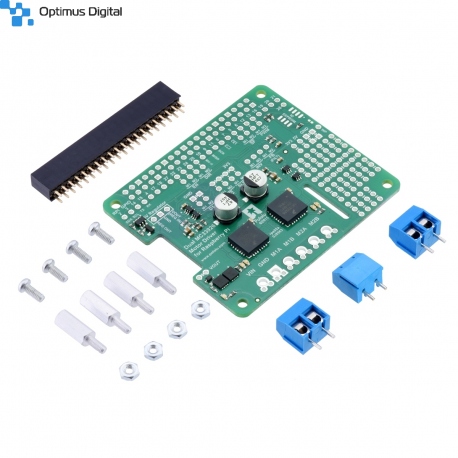 View larger
View larger
Dual MC33926 Engine Driver for Raspberry Pi (Disassembled)
0104110000027061
New product
This add-on board enables a compatible Raspberry Pi (Model B+ or newer), including the Pi 3 Model B+ and Model A+, to drive a pair of brushed DC motors. Its dual MC33926 motor drivers operate from 5 V to 28 V and can deliver a continuous 3 A (5 A peak) per motor.
See description for more details about the product.
Add to cart now!
This product is no longer in stock
- Write a review
- Remove this product from my favorite's list.
- Add this product to my list of favorites.
More info
Overview
This motor driver board is an add-on for a compatible Raspberry Pi (Model B+ or newer), including the Pi 3 Model B+ and Model A+, that lets it easily control a pair of bidirectional, brushed DC motors. The expansion board uses a pair of Freescale MC33926 motor drivers, which operate from 5 to 28 V and can deliver a continuous 3 A per channel (up to 5 A per channel for a few seconds). Other features include a reverse battery protection circuit and logic gates that reduce the number of I/O pins required to control the driver ICs effectively.
The board’s default configuration uses six GPIO pins to control the motor drivers, making use of the Raspberry Pi’s hardware PWM outputs, and it uses two additional pins to read status outputs from the drivers. However, the pin mappings can be customized if the defaults are not convenient, and other control inputs and outputs of the MC33926 ICs are accessible on the board for more advanced applications.
_1.jpg)
_2.jpg)
The board matches the Raspberry Pi HAT (Hardware Attached on Top) mechanical specification, although it does not conform to the full HAT specifications due to the lack of an ID EEPROM. (A footprint for adding your own EEPROM is available for applications where one would be useful; pull-ups on SDA, SCL, and WP are provided.) It is not practical to use this expansion board with the original Raspberry Pi Model A or Model B due to differences in their pinout and form factor.
Features
• Wide operating voltage range: 5 V to 28 V
• Output current: 3 A continuous (5 A peak) per motor
• PWM operation up to 20 kHz, which is ultrasonic and allows for quieter motor operation
• Motor indicator LEDs show what the outputs are doing even when no motor is connected
• Board can optionally power the Raspberry Pi base directly through added regulator (not included)
• Python library makes it easy to get started using this board as a motor driver expansion board
• GPIO pin mappings can be customized if the default mappings are not convenient
• Remaining motor driver pins are exposed for advanced use
• Reverse-voltage protection on motor supply
• Robust drivers:
○ Transient operation (< 500 ms) up to 40 V
○ Internal peak-current limiting gracefully reduces the output power if the current or temperature get too high
○ Under-voltage shutdown
○ Output short-to-ground and short-to-Vcc protection
• Prototyping space for easier/cleaner construction of custom circuits
Details
This version of the motor driver is a partial kit, with connectors included but not soldered in. (See this item for an assembled version.)
_3.jpg)
Dual MC33926 Motor Driver for Raspberry Pi (kit version) with included hardware.
Using the motor driver board
This section explains how to use the dual MC33926 motor driver add-on board and provides some basic information about the motor driver pins to help get you started. However, we strongly encourage you to consult the MC33926 datasheet (1MB pdf) for detailed pin descriptions, truth tables, and electrical characteristics. This expansion board is essentially a breakout board for two MC33926 motor driver ICs with additional logic circuitry to simplify the motor control, so the datasheet is your best resource for answering questions not covered here.
_4.jpg)
In the board’s default state, the motor driver outputs and the Raspberry Pi are powered separately, though they share a common ground and the board’s 3.3 V logic supply is provided by the Raspberry Pi. When used this way, the Raspberry Pi must be powered via its USB Micro-B receptacle, and the motor driver board must be supplied with 5 V to 28 V through its large VIN and GND pads. However, the motor driver board provides a set of three through-holes where you can conveniently connect an appropriate voltage regulator, allowing the motor supply to also power the Raspberry Pi (see the Powering the Raspberry Pi from the motor driver board section below).
A reverse-voltage protection circuit helps prevent damage to the board in case the motor power supply is connected backward. The reverse-protected input voltage can be accessed for use in other circuits through the two pins labeled VOUT on the left side of the board.
The board includes logic gates that enable drive/brake operation of the MC33926 drivers with only two control pins per motor (PWM and direction). As drive/brake operation usually provides a more linear relationship between PWM duty cycle and motor speed than drive/coast operation, we generally recommend using drive/brake operation when possible.
_5.jpg)
Driving motors with a dual motor driver on a on a Raspberry Pi Model B+ or Pi 2 Model B. A step-down regulator provides 5 V to the Raspberry Pi.
Default pin mappings
This table shows how the Raspberry Pi’s GPIO pins are used to interface with the motor drivers:
| RPi GPIO pin | Motor driver pin | Description |
| 5 | Motor 1 SF | Status flag output: When the driver is functioning normally, this pin should be pulled high by the Raspberry Pi. In the event of a driver fault , the driver IC drives SF low. If either of the disable pins (D1 or D2) is disabling the outputs, SF will also be low. |
| 6 | Motor 2 SF | |
| 12 | Motor 1 PWM | Motor speed input: A PWM (pulse-width modulation) signal on this pin corresponds to a PWM output on the corresponding driver’s motor outputs. When this pin is low, the motor brakes low. When it is high, the motor is on. The maximum allowed PWM frequency is 20 kHz. |
| 13 | Motor 2 PWM | |
| 22 | Motor 1 EN | Enable input: This pin is internally pulled low, putting the motor driver IC into a low-current sleep mode and disabling the motor outputs (setting them to high impedance). EN must be driven high to enable the motor driver. |
| 23 | Motor 2 EN | |
| 24 | Motor 1 DIR | Motor direction input: When DIR is low, motor current flows from output A to output B; when DIR is high, current flows from B to A. |
| 25 | Motor 2 DIR |
Simplified motor control truth table
This table shows how the drivers’ control inputs affect the motor outputs:
| Inputs | Outputs | ||||
| EN | DIR | PWM | MxA | MxB | operating mode |
| 1 | 0 | PWM | PWM (H/L) | L | forward/brake at speed PWM % |
| 1 | 1 | PWM | L | PWM (H/L) | reverse/brake at speed PWM % |
| 1 | X | 0 | L | L | brake low (outputs shorted to ground) |
| 0 | X | X | Z | Z | coast (outputs off) |
Remapping pins
All of the Raspberry Pi’s GPIO pins are broken out along a row of numbered through-holes just below the 40-pin GPIO connector. Each GPIO pin used by the board is connected from this row to the corresponding motor driver pin by a trace on the underside of the board spanning the pair of holes. If you want to remap one of these motor driver pins, you can cut its trace with a knife and then run a wire from the lower hole to a new GPIO pin.
_6.jpg)
Bottom view of the dual MC33926 motor driver for Raspberry Pi, showing cuttable traces.
Note that the default pin mappings were chosen so that the Raspberry Pi’s default GPIO pull-ups and pull-downs match the direction the motor driver pins are or should be pulled (up for SF, down for others); if you remap the motor driver pins without paying attention to this, you might encounter issues with pins being pulled the wrong way. See the Raspberry Pi documentation for more about the default GPIO states.
Using additional MC33926 pins
The rest of the MC33926 inputs and outputs are not connected to the Raspberry Pi, but they are accessible through their own through-holes in case you want to use them in a more advanced application of the motor drivers. The board ties some of the inputs high or low through cuttable traces, similar to the way the remappable pins are connected, and you should cut the trace before connecting each input to anything else. This table shows the default configuration of the additional pins:
| Motor driver pin | Description | Default configuration on board |
| D1 | Disable input 1(active high) | Tied low (inactive) through cuttable trace |
| D2 | Disable input 2 (active low) | Tied high (inactive) through cuttable trace |
| SLEW | Slew rate selection | Tied high to select fast slew rate through cuttable trace |
| INV | Input invert | Internally pulled low (non-inverted) |
| FB | Feedback (current sense output) | Connected to sense resistor and low-pass filter to output approx. 360 mV/A (only active while H-bridge is driving) |
Powering the Raspberry Pi from the motor driver board
On the left side of the expansion board is a set of three pins surrounded by a box labeled "5V Regulator". The "VOUT (REG IN)" pin provides access to the driver board’s motor supply voltage after reverse-voltage protection, while the "REG OUT" pin is connected to the Raspberry Pi’s 5V power rail through an ideal diode circuit. If a suitable voltage regulator is connected to these three pins, it can generate 5 V to power the Raspberry Pi from the board’s motor supply voltage. We suggest using our D24V5F5 or D24V10F5 switching step-down regulators, which work at input voltages up to the 28 V maximum of the MC33926 and can supply up to 500 mA or 1 A of current, respectively, to the Raspberry Pi.
_7.jpg)
D24V10F5 step-down regulator connected to an assembled Pololu Dual MC33926 Motor Driver for Raspberry Pi.
When adding a voltage regulator to the motor driver board, take care to orient it correctly: note that the motor driver board’s "VOUT (REG IN)" pin should connect to the regulator’s VIN pin, while the regulator’s VOUT pin should connect to the motor driver board’s "REG OUT" pin.
There are a few considerations to keep in mind when “back-powering” the Raspberry Pi through a voltage regulator in this way:
• Your motor power supply must be an acceptable voltage for both the regulator and the MC33926 driver ICs.
• The regulator should be able to handle the power requirements of the Raspberry Pi. The Model B+ typically uses a few hundred milliamps at 5 V, although its current draw can exceed 1 A if it is also supplying power to USB devices and other peripherals. While a linear regulator like a 7805 might fit in the regulator mounting location, it could generate excessive heat or shut down at higher input voltages and output currents. We recommend using a switching regulator like the ones mentioned above.
The ideal diode circuit on this board prevents reverse current from flowing into the motor driver board’s 5 V supply if the Raspberry Pi is separately powered (for example, through its USB power receptacle). However, starting with the Raspberry Pi 3 Model B+, there is no corresponding ideal diode circuit on the Raspberry Pi’s USB power input, so it is possible for the driver board to backfeed a USB power adapter through the Raspberry Pi. As a result, we do not recommend connecting external USB power to the Raspberry Pi while it is powered through the motor driver.
Backfeeding is not an issue with older Raspberry Pi versions, which do have a diode circuit on the USB power input. With Raspberry Pi versions prior to the Pi 3 B+, it is safe to have a different power supply connected to the Raspberry Pi through its USB receptacle while the motor driver add-on and regulator are connected and powered.
Real-world power dissipation considerations
Each MC33926 motor driver IC has a maximum continuous current rating of 5 A. However, the actual current it can deliver depends on how well you can keep it cool. The motor driver board is designed to draw heat out of the motor driver chips, but performance can be improved by adding heat sinks.
Unlike many other H-bridges, the MC33926 has a feature that allows it to gracefully reduce current as the current exceeds 5 A or as the chip temperature approaches its limit. This means that if you push the chip close to its limit, you will see less power to the motor, but it might allow you to avoid a complete shutdown.
We tested this motor driver board at room temperature with no forced air flow or heat sinks. In our tests, the board was able to deliver 5 A to both channels simultaneously for about 10 s before the thermal protection started reducing the current. The board delivered 4 A on both channels for about 40 s, and at 3 A it was able to operate continuously for over 10 minutes without triggering current limiting or thermal protection.
Our tests were conducted at 100% duty cycle; PWMing the motor will introduce additional heating proportional to the frequency.
This product can get hot enough to burn you long before the chip overheats. Take care when handling this product and other components connected to it.
Schematic diagram
A schematic diagram is available as a PDF: Dual MC33926 Motor Driver for Raspberry Pi schematic diagram (211k pdf).
Specifications
Dimensions
| Size: | 65 mm x 56 mm |
| Weight: | 14 g1 |
General specifications
| Motor driver: | MC33926 |
| Motor channels: | 2 |
| Minimum operating voltage: | 5 V2 |
| Maximum operating voltage: | 28 V3 |
| Continuous output current per channel: | 3 A |
| Peak output current per channel: | 5 A |
| Maximum PWM frequency: | 20 kHz |
| Reverse voltage protection?: | Y |
| Partial kit?: | Y |
Notes:
1 Without included connectors and mounting hardware.
2 Operation from 5 V to 8 V reduces maximum current output.
3 The device is protected for transients up to 40 V.
Don't delay. Buy today.
Add to cart now!
Reviews
Customers who bought this product also bought:
-
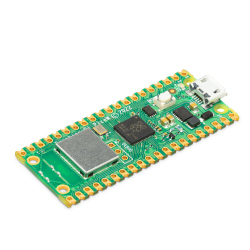
Raspberry Pi...
Original Product Raspberry Pi Pico W is a...
$8.28
-
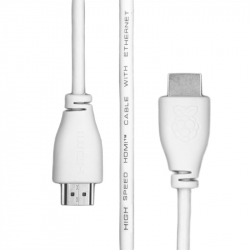
Raspberry Pi...
Raspberry Pi HDMI-HDMI Cable 1 m
$5.28
-
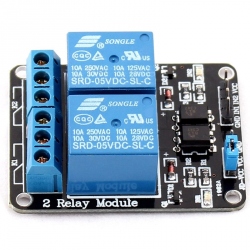
5 V Relay...
This module allows you to control high voltage...
$1.88
-
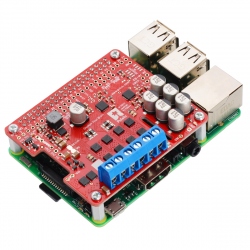
Pololu Dual...
This add-on board makes it easy to control two...
$54.96
-
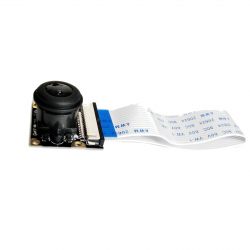
5MP Night...
This is a camera compatible with any version of...
$36.00
-
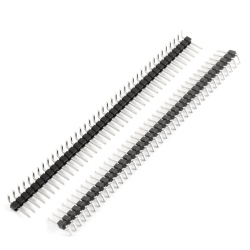
90° 2.54 mm...
These 1 x 40 right angle male pin headers are...
$0.36
-
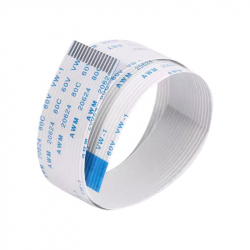
Raspberry Pi...
Raspberry Pi Camera Cable - 50 cm See...
$3.60
-
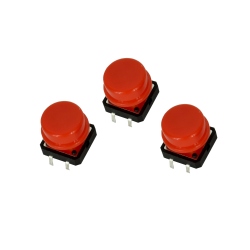
Red Button...
These red round caps are designed for push...
$0.48
-

Pololu Dual...
This add-on board makes it easy to control two...
$107.76
-
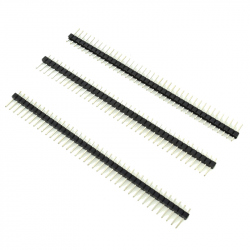
40p 2.54 mm...
This pin header is great for prototyping PCBs....
$0.24









